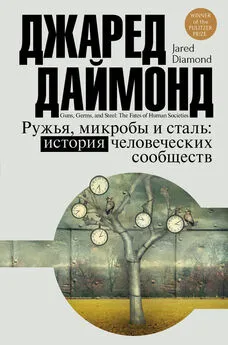Паскаль Буайе - Анатомия человеческих сообществ [Как сознание определяет наше бытие] [litres]
- Название:Анатомия человеческих сообществ [Как сознание определяет наше бытие] [litres]
- Автор:
- Жанр:
- Издательство:Литагент Альпина
- Год:2019
- Город:Москва
- ISBN:978-5-0013-9180-7
- Рейтинг:
- Избранное:Добавить в избранное
-
Отзывы:
-
Ваша оценка:
Паскаль Буайе - Анатомия человеческих сообществ [Как сознание определяет наше бытие] [litres] краткое содержание
Сопоставляя последние достижения эволюционной биологии, психологии, генетики, экономики и других научных дисциплин, автор представляет новый взгляд на устройство человеческих обществ. Буайе убедительно доказывает, насколько значимую роль когнитивные процессы играют в том, как люди выстраивают иерархии, семейные и гендерные нормы, как возникают межгрупповые конфликты и этнические стереотипы.
В фокусе его внимания находится принципиальный вопрос: как выработанные в ходе эволюции способности и предрасположенности человека объясняют то, как мы живем в обществе? И почему данные естественных наук критически важны для понимания исторических событий и социальных процессов?
Анатомия человеческих сообществ [Как сознание определяет наше бытие] [litres] - читать онлайн бесплатно ознакомительный отрывок
Интервал:
Закладка:
Paladino, M.-P., and Castelli, L. (2008). "On the Immediate Consequences of Intergroup Categorization: Activation of Approach and Avoidance Motor Behavior toward Ingroup and Outgroup Members." Personality and Social Psychology Bulletin , 34 (6), 755–68. doi: 10.1177 / 0146167208315155
Payne, B. K. (2001). "Prejudice and Perception: The Role of Automatic and Controlled Processes in Misperceiving a Weapon." Journal of Personality and Social Psychology , 81 (2), 181–92. doi: 10.1037 / 0022–3514.81.2.181
Payne, B. K., Lambert, A. J., and Jacoby, L. L. (2002). "Best Laid Plans: Effects of Goals on Accessibility Bias and Cognitive Control in Race-Based Misperceptions of Weapons." Journal of Experimental Social Psychology , 38 (4), 384–96. doi: 10.1016 / s0022–1031 (02) 00006–9
Pelphrey, K. A., Morris, J. P., and McCarthy, G. (2005). "Neural Basis of Eye Gaze Processing Deficits in Autism." Brain: A Journal of Neurology , 128 (5), 1038–48.
Perrett, D. I., Burt, D. M., Penton-Voak, I. S., Lee, K. J., Rowland, D. A., and Edwards, R. (1999). "Symmetry and Human Facial Attractiveness." Evolution and Human Behavior , 20 (5), 295–07.
Peters, E. L. (1978). "The Status of Women in Four Middle East Communities." In Beck, L., and N. Kiddie (eds.), Women in the Muslim world , pp. 311–50. Cambridge, Mass.: Harvard University Press.
Pettigrew, T. F., and Tropp, L. R. (2008). "How Does Intergroup Contact Reduce Prejudice? Meta-Analytic Tests of Three Mediators." European Journal of Social Psychology , 38 (6), 922–34.
Pettit, P. (2003). "Groups with Minds of Their Own." In F. Schmitt (ed.), Socializing Metaphysics: The Nature of Social Reality , pp. 167–93. Lanham, MD: Rowman and Littlefield.
Pew Research Center (2013). "The World's Muslims: Religion, Politics and Society." In Pew Research Center's Forum on Religion and Public Life , pp. 226–237. Washington, D. C.: Pew Research Center.
Piaget, J. (1932). The Moral Judgment of the Child . London: Routledge and Kegan Paul.
Piazza, J., and Bering, J. (2008). "Concerns about Reputation Via Gossip Promote Generous Allocations in an Economic Game." Evolution and Human Behavior , 29 (3), 172–78.
Pickrell, J. K., Coop, G., Novembre, J., Kudaravalli, S., Li, J. Z., Absher, D., Srinivasan, B. S., Barsh, G. S., Myers, R. M., Feldman, M. W., Pritchard, J. K. (2009). "Signals of Recent Positive Selection in a Worldwide Sample of Human Populations." Genome Research , 19 (5), 826–37. doi: 10.1101 / gr.087577.108
Pietraszewski, D. (2013). "What Is Group Psychology? Adaptations for Mapping Shared Intentional Stances." In M. R. Banaji, S. A. Gelman, M. R. Banaji, and S. A. Gelman (eds.), Navigating the Social World: What Infants, Children, and Other Species Can Teach Us , pp. 253–57. New York: Oxford University Press.
Pietraszewski, D., Cosmides, L., and Tooby, J. (2014). "The Content of Our Cooperation, Not the Color of Our Skin: An Alliance Detection System Regulates Categorization by Coalition and Race, but Not Sex." PLoS One , 9 (2), 1–19. doi: 10.1371 / journal.pone.0088534
Pietraszewski, D., Curry, O. S., Petersen, M. B., Cosmides, L., and Tooby, J. (2015). "Constituents of Political Cognition: Race, Party Politics, and the Alliance Detection System." Cognition , 140, 24–39. doi: 10.1016 / j.cognition.2015.03.007
Pike, S. M. (2012). New Age and Neopagan Religions in America . New York: Columbia University Press.
Pinker, S. (1984). Language Learnability and Language Development . Cambridge, Mass.: Harvard University Press.
Pinker, S. (1989). Learnability and Cognition: The Acquisition of Argument Structure . Cambridge, Mass.: MIT Press.
Plott, C. R. (1974). On Game Solutions and Revealed Preference Theory Social Science Working Papers, California Institute of Technology . (Vol. 35). Pasadena, CA: California Institute of Technology.
Polanyi, K. (2001 [1957]). "The Economy as Instituted Process." In M. Granovetter and R. Swedberg (eds.), The Sociology of Economic Life. Boulder, CO: Westview Press.
Porta, D. (2008). Research on Social Movements and Political Violence. Qualitative Sociology , 31 (3), 221–230.
Posner, E. A. (2000). Law and social norms. Cambridge, Mass.: Harvard University Press.
Posner, R. A. (1980). A Theory of Primitive Society, with Special Reference to Law. Journal of Law and Economics , 23 (1), 1–53.
Posner, R. A. (2001). "A Theory of Primitive Society, with Special Reference to Law." In F. Parisi (ed.), The Collected Essays of Richard A. Posner, vol. 2. The Economics of Private Law, pp. 3–55. Northampton, Mass.: Elgar.
Povinelli, D. J. (2003). "Folk physics for apes: the chimpanzee's theory of how the world works." Human Development , 46, 161–168.
Povinelli, D. J., and Eddy, T. J. (1996). "Chimpanzees: Joint visual attention." Psychological Science , 7 (3), 129–135.
Pratto, F., and John, O. P. (1991). "Automatic vigilance: The attention-grabbing power of negative social information." Journal of Personality and Social Psychology , 61 (3), 380–391.
Price, M. E. (2005). "Punitive sentiment among the Shuar and in industrialized societies: Cross-cultural similarities." Evolution and Human Behavior , 26 (3), 279–287. doi: 10.1016 / j.evolhumbehav.2004.08.009
Putnam, R. D. (2000). Bowling alone: the collapse and revival of American community . New York, NY: Simon and Schuster.
Putnam, R. D. (2007). "E Pluribus Unum: Diversity and Community in the Twenty-first Century", The 2006 Johan Skytte Prize Lecture. Scandinavian Political Studies , 30 (2), 137–174.
Putnam, R. D. (ed.). (2002). Democracies in flux: the evolution of social capital in contemporary society . New York: Oxford University Press.
Putnam, R. D. (2010). American Grace: How Religion Divides and Unites Us . New York: Simon and Schuster.
Puts, D. A. (2005). "Mating Context and Menstrual Phase Affect Women's Preference for Male Voice Pitch." Evolution and Human Behavior , 31, 157–175.
Quigley, D. (1993). The Interpretation of Caste . Oxford, New York: Clarendon Press, Oxford University Press.
Quigley, D. (2005). The Character of Kingship (English ed.). Oxford; New York: Berg.
Quinlan, R. J. (2003). "Father Absence, Parental Care, and Female Reproductive Development." Evolution and Human Behavior , 24 (6), 376–390.
Quinlan, R. J., Quinlan, M. B., and Flinn, M. V. (2003). "Parental Investment and Age at Weaning in a Caribbean Village." Evolution and Human Behavior , 24 (1), 1–16.
Rabbie, J., Schot, J., and Visser, L. (1989). "Social Identity Theory: A Conceptual Critique from the Perspective of a Behavioural Interaction Model." European Journal of Social Psychology , 19, 171–202.
Rachman, S. (1977). "The conditioning theory of fear-acquisition: A critical examination." Behaviour Research and Therapy , 15 (5), 375–387. doi: 10.1016 / 0005–7967 (77) 90041–9
Rakoczy, H., and Schmidt, M. F. H. (2013). "The early ontogeny of social norms. " Child Development Perspectives , 7 (1), 17–21. doi: 10.1111 / cdep.12010
Rakoczy, H., Warneken, F., and Tomasello, M. (2008). "The sources of normativity: Young children's awareness of the normative structure of games." Developmental Psychology , 44 (3), 875–881. doi: 10.1037 / 0012–1649.44.3.87510.1037 / 0012–1649.44.3.875.supp (Supplemental)
Ramble, C. (2008). The Navel of the Demoness. Tibetan Buddhism and Civil Religion in Highland Nepal . Oxford: Oxford University Press.
Rawls, J. (1971). A theory of justice . Cambridge, Mass.: Belknap Press of Harvard University Press.
Read, L. E., Reed, L. W., Ebeling, R. M., and Friedman, M. (2009). I, Pencil. Atlanta: Foundation for Economic Education.
Renfrew, C. (1969). "Trade and Culture Process in European Prehistory." Current Anthropology , 10 (2–3), 151–69.
Rhodes, G., Proffitt, F., Grady, J. M., and Sumich, A. (1998). "Facial Symmetry and the Perception of Beauty." Psychonomic Bulletin and Review , 5 (4), 659–69.
Ricardo, D. (1817). On the Principles of Political Economy, and Taxation . London: John Murray at John M'Creery's Printers.
Richerson, P. J., and Boyd, R. (2005). Not by Genes Alone: How Culture Transformed Human Evolution . Chicago: University of Chicago Press.
Ridley, M. (1996). The Origins of Virtue: Human Instincts and the Evolution of Cooperation . New York: Penguin Books.
Ridley, M. (2010). The Rational Optimist: How Prosperity Evolves (1st U. S. ed.). New York: Harper.
Roemer, J. E. (1996). Theories of Distributive Justice . Cambridge, Mass.: Harvard University Press.
Roff, D. A. (2007). "Contributions of Genomics to Life-History Theory." Nature Reviews Genetics , 8 (2), 116–25.
Rosenberg, A. (1980). Sociobiology and the Preemption of Social Science. Baltimore: Johns Hopkins University Press.
Rosenblum, L. A., and Paully, G. S. (1984). "The Effects of Varying Environmental Demands on Maternal and Infant Behavior." Child Development , 55 (1), 305. doi: 10.1111 / 1467–8624.ep7405592
Ross, L., Greene, D., and House, P. (1977). "The False Consensus Effect: An Egocentric Bias in Social Perception and Attribution Processes." Journal of Experimental Social Psychology , 13 (3), 279–301.
Rotberg, R. (1999). "Social Capital and Political Culture in Africa, America, Australasia, and Europe." Journal of Interdisciplinary History , 29 (3), 339–56.
Roth, I. (2007). Imaginative Minds . Oxford: New York.
Rothbart, M., and Taylor, M. (1990). "Category Labels and Social Reality: Do We View Social Categories as Natural Kinds?" In K. F. G. Semin (ed.), Language and Social Cognition , pp. 11–36. London: Sage.
Rothschild, L. S. (2001). Psychological Essentialism: Social Categories, and the Impact of Prejudice . New York: New School For Social Research.
Rousseau, J.-J. (1984 [1755]). A Discourse on Inequality [trans. M. Cranston]. Harmondsworth, England: Penguin.
Rousseau, J. J. (1762). Du contrat social . Chicoutimi, Québec: Les classiques en sciences sociales.
Rowe, D. C. (2002). "On Genetic Variation in Menarche and Age at First Sexual Intercourse: A Critique of the Belsky-Draper Hypothesis." Evolution and Human Behavior , 23 (5), 365–72. doi: 10.1016 / S1090–5138 (02) 00102–2
Rozin, P., Millman, L., and Nemeroff, C. (1986). "Operation of the Laws of Sympathetic Magic in Disgust and Other Domains." Journal of Personality and Social Psychology , 50 (4), 703–12.
Rozin, P., and Royzman, E. B. (2001). "Negativity Bias, Negativity Dominance, and Contagion." Personality and Social Psychology Review , 5 (4), 296–320. doi: 10.1207 / S15327957PSPR0504_2
Rubin, P. H. (2002). Darwinian Politics: The Evolutionary Origin of Freedom . New Brunswick, N. J.: Rutgers University Press.
Rubin, P. H. (2013). Emporiophobia (Fear of Markets): Cooperation or Competition? New York: Technology Policy Institute.
Ryan, M. J., and Guerra, M. A. (2014). "The Mechanism of Sound Production in Túngara Frogs and Its Role in Sexual Selection and Speciation." Current Opinion in Neurobiology , 28, 54–59. doi: http://dx.doi.org / 10.1016 / j.conb.2014.06.008
Saad, G. (2012). The Evolutionary Bases of Consumption . Mahwah, N. J.: Lawrence Erlbaum Associates.
Читать дальшеИнтервал:
Закладка:
![Обложка книги Паскаль Буайе - Анатомия человеческих сообществ [Как сознание определяет наше бытие] [litres]](/books/1075472/paskal-buaje-anatomiya-chelovecheskih-soobchestv-kak.webp)


![Илья Кнабенгоф - Анатомия шоу-бизнеса [Как на самом деле устроена индустрия] [litres]](/books/1059140/ilya-knabengof-anatomiya-shou.webp)
![Джесси Шелл - Геймдизайн [Как сознание определяет наше бытие] [litres]](/books/1075468/dzhessi-shell-gejmdizajn-kak-soznanie-opredelyaet-na.webp)
![Джей Эшер - Наше будущее [litres]](/books/1091325/dzhej-esher-nashe-buduchee-litres.webp)


![Олег Панков - Как очки убивают наше зрение [litres]](/books/1145718/oleg-pankov-kak-ochki-ubivayut-nashe-zrenie-litres.webp)

